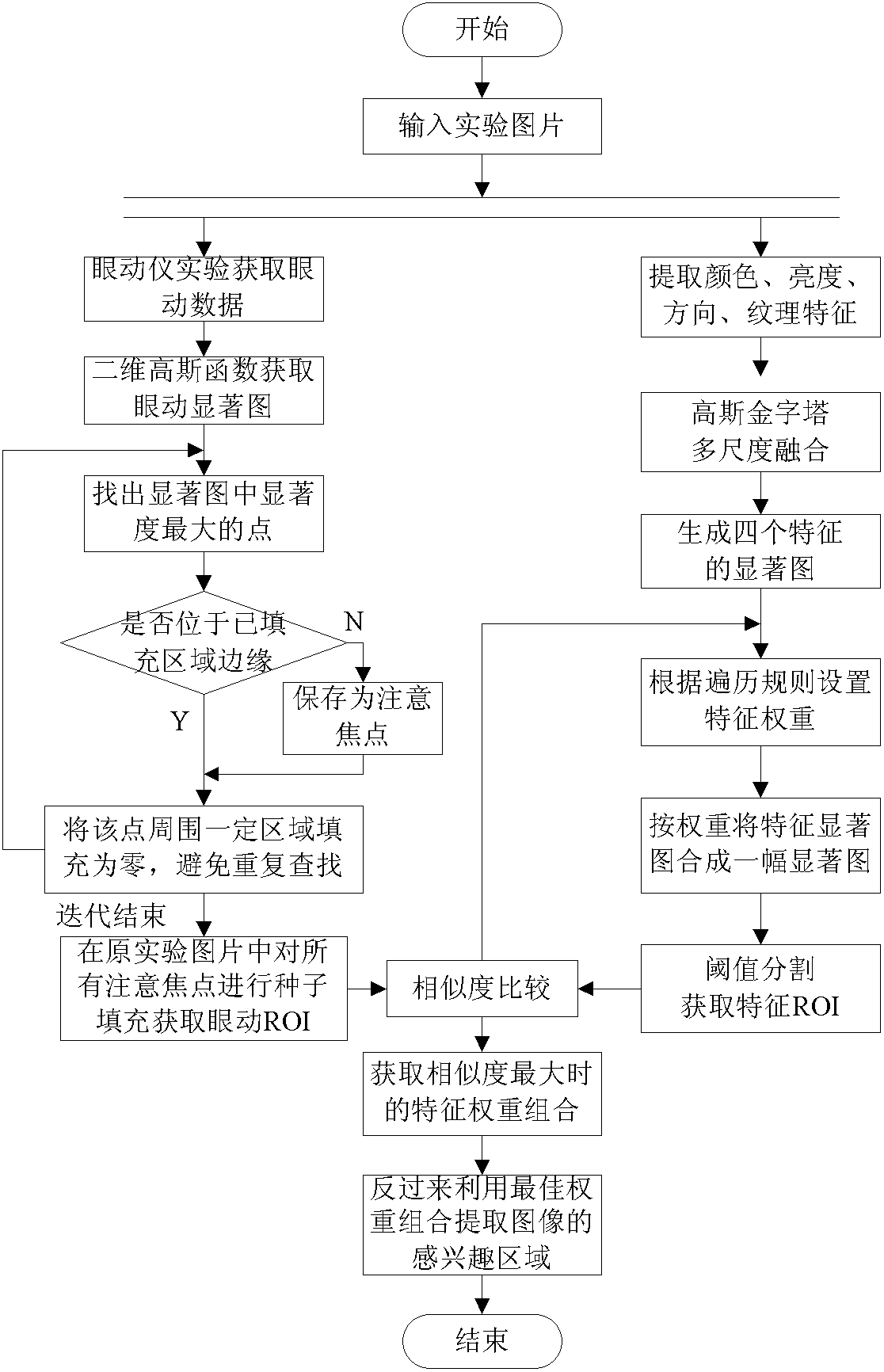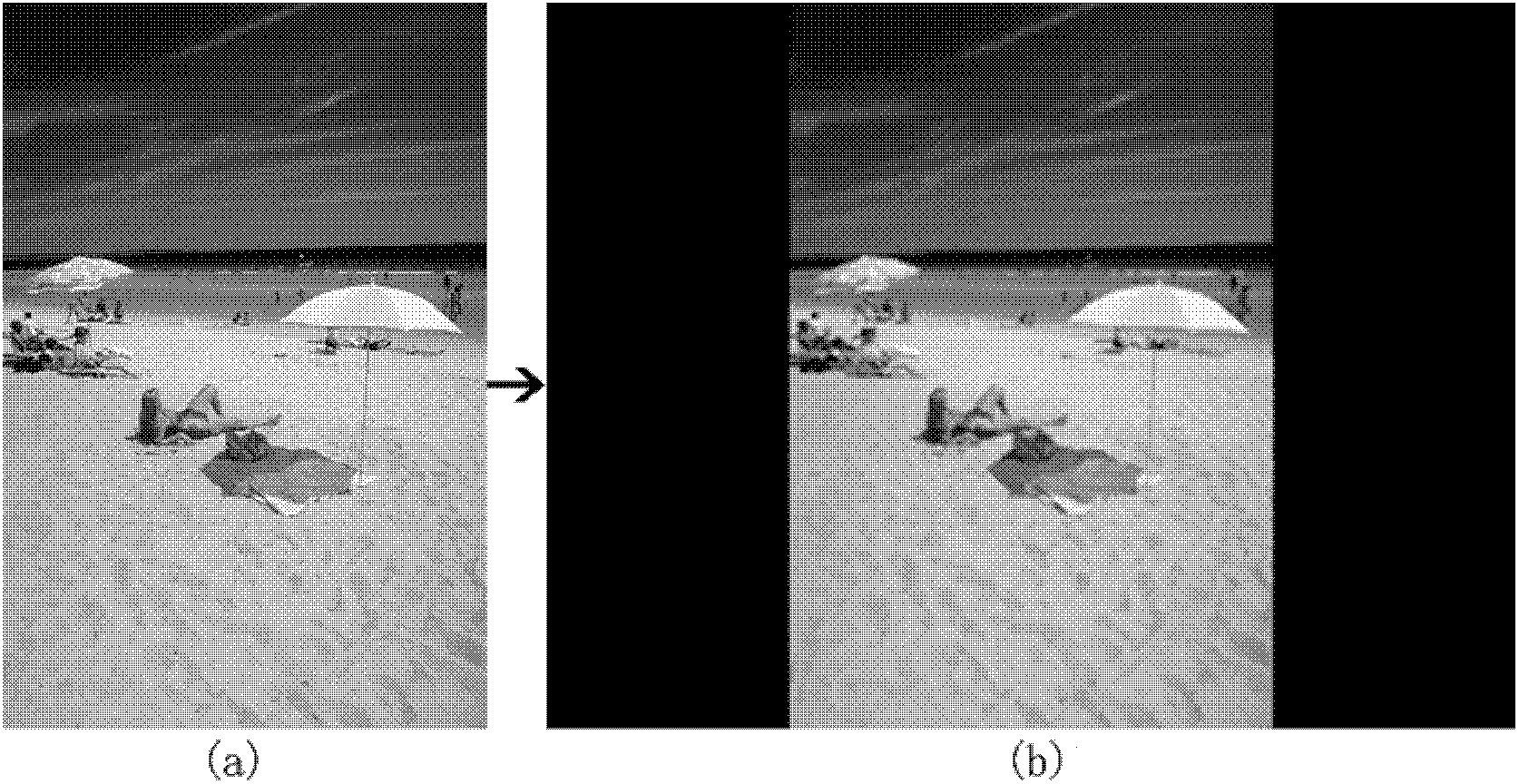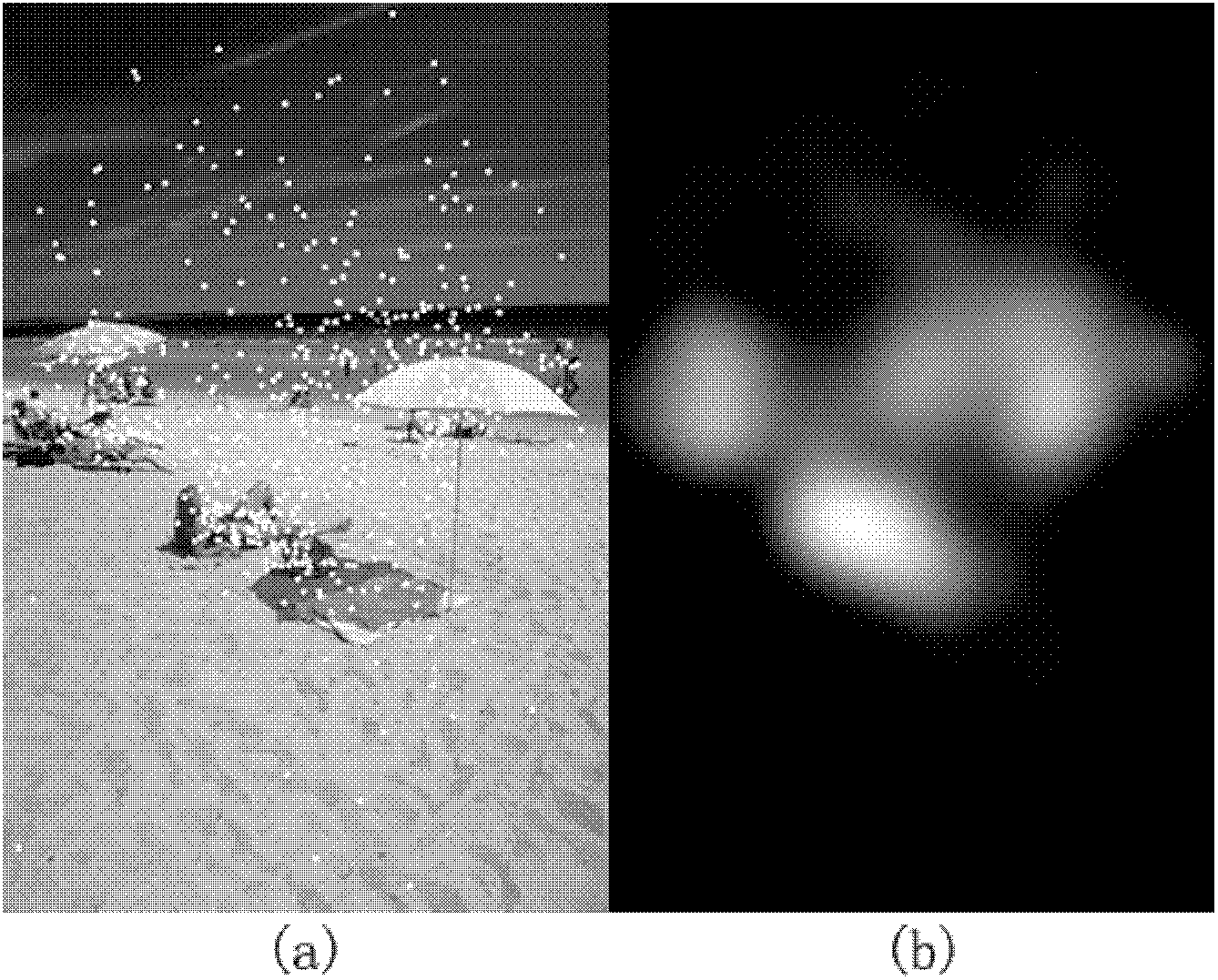Method for extracting image region of interest based on eye movement data and bottom-layer features
A region of interest and underlying feature technology, applied in the field of image recognition, can solve problems such as the large influence of brightness features, the lack of consideration of the difference in the impact of underlying features on the region of interest, and the insignificant effect of the region of interest. Area accurate and true effect
- Summary
- Abstract
- Description
- Claims
- Application Information
AI Technical Summary
Problems solved by technology
Method used
Image
Examples
Embodiment Construction
[0067] The present invention will be described in further detail below in conjunction with the drawings and specific implementation process.
[0068] The present invention proposes a method for extracting a region of interest based on eye movement data and underlying features, including: first extracting the region of interest reflecting the real semantic needs of the user based on the eye movement data obtained from the eye tracker experiment; and then extracting the region of interest by extracting The bottom-level features and the formation of the weighted combination are used to obtain the ROI of the image; finally, the ROI extracted by the two methods is compared to find the best weight combination, and it is used to extract the ROI of other common pictures of the same type.
[0069] see figure 1 , for the specific process of the present invention, first introduce the implementation details of each step.
[0070] 1. Use the eye tracker experiment to obtain the eye moveme...
PUM
 Login to View More
Login to View More Abstract
Description
Claims
Application Information
 Login to View More
Login to View More - R&D
- Intellectual Property
- Life Sciences
- Materials
- Tech Scout
- Unparalleled Data Quality
- Higher Quality Content
- 60% Fewer Hallucinations
Browse by: Latest US Patents, China's latest patents, Technical Efficacy Thesaurus, Application Domain, Technology Topic, Popular Technical Reports.
© 2025 PatSnap. All rights reserved.Legal|Privacy policy|Modern Slavery Act Transparency Statement|Sitemap|About US| Contact US: help@patsnap.com



